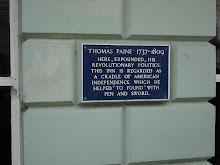


Now is the time to beat a path to the achingly wonderful Harvey's off-licence. Stocking up on Christmas booze from our favourite local brewer - Harvey's of Lewes is one of life's great pleasures. A visit to Lewes is a treat in itself but get thee to Cliffe High Street and really put the brandy butter on the Christmas cake! The low black and white building has large windows displaying every kind of refreshment you can imagine plus breweriana in the from of jugs, glasses and clothing sporting the name of Sussex's finest. Enter through the narrow doorway and step down into the shop - I like stepping down into a premises - so sort of Wind in the Willowsy somehow. You are met with a cornucopia of beer wines and spirits, a temple to tipplers who are there for no other reason than to be tempted. A small glass-paneled office sits beyond the counter where things are still entered in large ledgers...by hand. Helpful staff will nip out the back to the brewery proper and draw off whatever draught beer you want into your container or theirs. Dropped 'bright' this stuff tates better if consumed quickly which all adds to the obligation to polish it off with due dedication. All the bottled beers are there too including the brain-zapping Christmas Ale, which at 8.1% ABV will send grandpa off to the Land of Nod whilst you play a noisy hand of Happy Families - "Mr Bun the Baker" - "Sorry, not at home" - answering with a mere "No' will incur severe penalties in our house...the niceties must be observed. The comically ugly portraits on the Victorian Jacques cards always make the kids screw their faces up with revulsion. Anyway, back to Harvey's. Never ones to waste their profits on uncalled-for slick graphic design, they tend to adopt a minimalist approach and push the boat out on special occasions, and even then you get the impression that the whole operation is more Letraset driven than having had a computer anywhere near it. When you think of what a brewer like Adnams of Southwold, whom I also admire, must spend on their marketing, it makes the Harvey's operation even more remarkable. They don't really advertise at all for goodness sake but do they win prizes...yes they do...by the Tun (TUN..pun) geddit? and deservedly so. You may purchase beer online from Harvey's...I urge you to try it...incidentally I have no commercial association with them...save that of passing them large wads of cash over the years in pursuit of their excellent product.

















